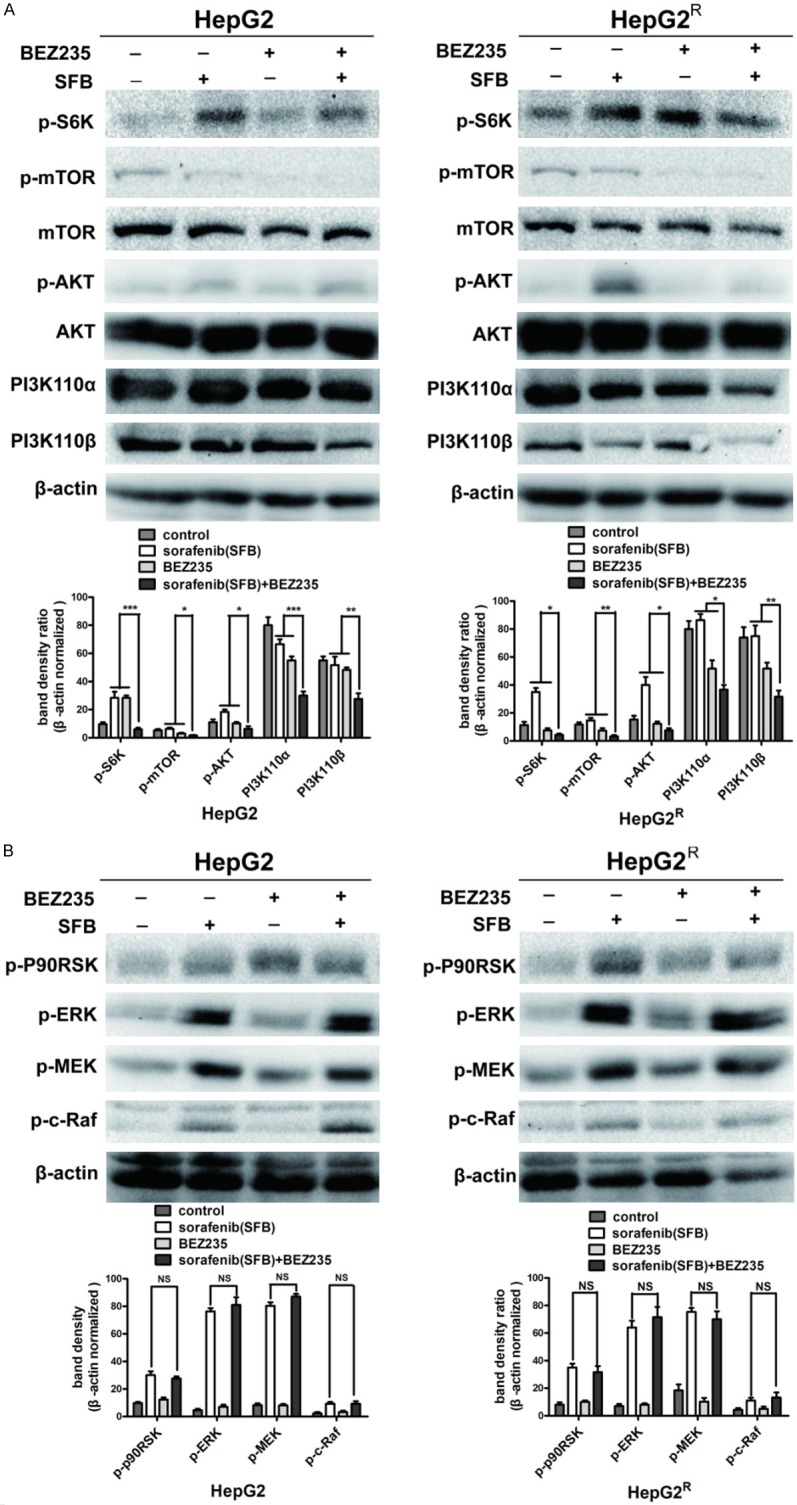Figure 6.

Protein analysis of PI3K/AKT/mTOR and Ras/Raf/MAPK pathways in HepG2 and HepG2R cells treated with sorafenib (HepG2, 4 μM; HepG2R, 10 μM), BEZ235 (0.25 μM), or the two drugs in combination for 24 h. A. Western blot analysis reveals that sorafenib promoted AKT and S6K phosphorylation in the PI3K/AKT/mTOR pathway in both HepG2 and HepG2R cells, which indicated that sorafenib monotherapy activated PI3K/AKT/mTOR signaling pathway. BEZ235, in combination with sorafenib, down-regulated PI3K, inhibited mTOR phosphorylation and sorafenib-induced phosphorylation of AKT and S6K. B. In both HepG2 and HepG2R cells, sorafenib promoted c-Raf, MEK, ERK and p90RSK phosphorylation in the absence of growth-factor stimulation, which may be a mechanism of cell self-protection and drug resistance. However, compared with sorafenib monotherapy, BEZ235 together with sorafenib did not decrease phosphorylation of sorafenib-induced key enzymes of the Ras/Raf/MAPK signaling pathway. Taken together, sorafenib and BEZ235 in combination treatment suppressed the PI3K/AKT/mTOR but not the Ras/Raf/MAPK pathway. (***P<0.001; **P<0.01; and *P<0.05). Data shown are the mean ± SD from three independent experiments.
